Magali Reus x T.A.C. Colenbrander Parallel Bones
KM21
2 November 2024 - 9 March 202511-02-2025
Whenever I see the work of Magali Reus, I think of Matthew Barney. While Barney has recently started working with gold, brass and terracotta, and Reus has continued to employ rubber, powder coating, laser-cut aluminium and hand-painted plaster, both artists celebrate the malleability of their materials, coaxing hard metals into soft curves. The resulting sculptures refer to new systems of meaning — sometimes mythological, sometimes mundane. And yet, a niggling sense that we’ve missed part of the action is a common effect of Reus’ work. What’s left is beautiful, staged detritus: a large, wall-bound padlock, broken (” Leaves,” 2015), a gigantic assemblage that looks like a jungle gym or defunct circuit board (“HWAEL,” 2017). Barney’s sculptures, on the other hand, are more overtly interwoven with the stories (however convoluted) and worlds of his Gesamtkunstwerke. “The video work is a means to a sculptural end,” he said in a recent interview.¹ A six-hour excrement-anointed wake for Norman Mailer (River of Fundament, 2014) seems like an extravagantly expensive excuse to make props for exhibition, but there is something special about the way Barney’s sculptures function as separate yet dependent excerpts of a larger story. I remember seeing props from The Cremaster Cycle (1994-2002) at the Walker Art Center two decades ago. Distanced from the films’ bombastic, self-serious and interminable frames, they felt unburdened — almost whimsical. An upside-down saddle encrusted in mirrored tiles spun languidly, as if just dismounted.
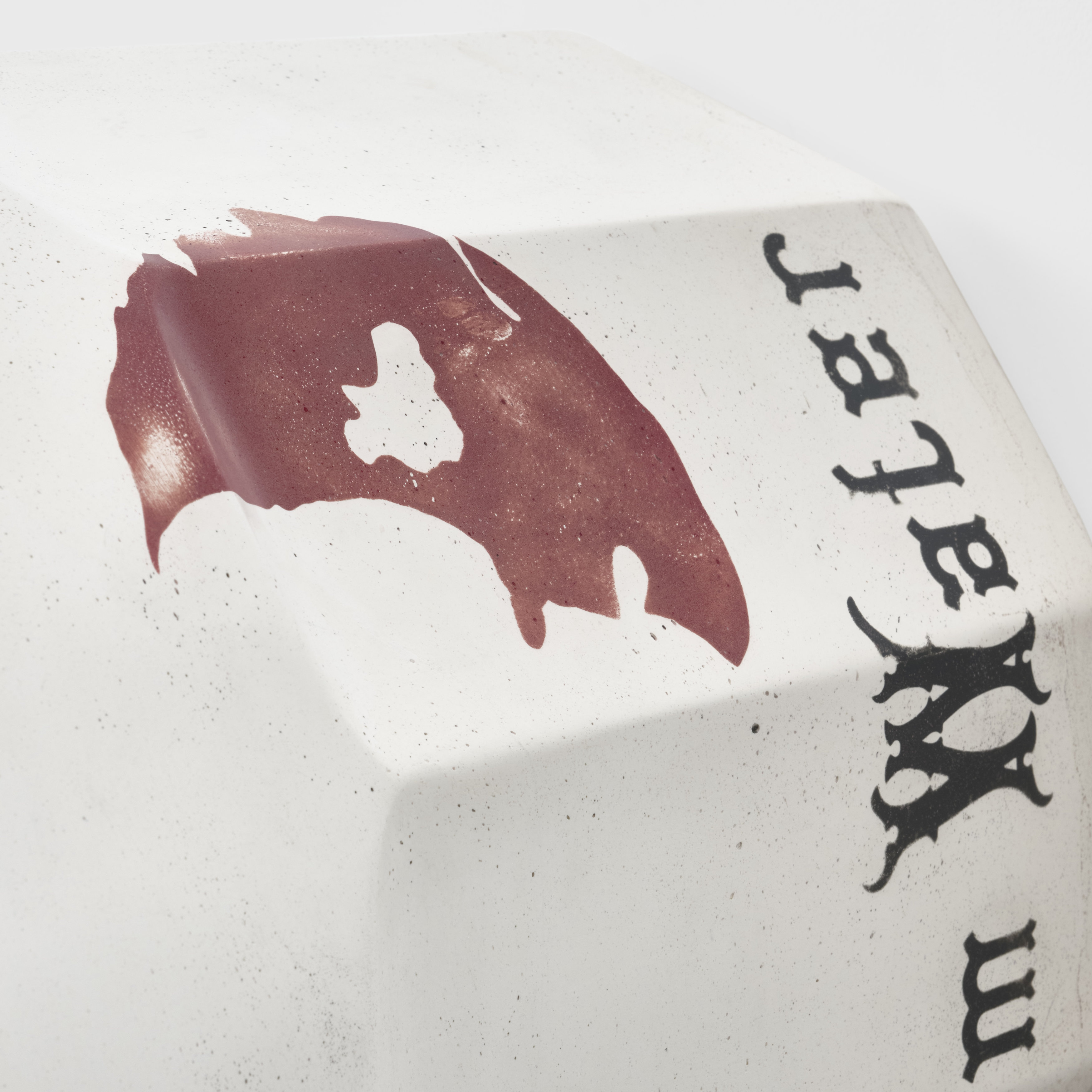
Reus’ sculptures could also be called props, though they seem intended to steal the show, such as her series “Clementine“ (2024), consisting of comically oversized Bonne Maman jam jars presented on the wall at a ninety degree angle so that the lid or covering faces the viewer. Reus is prolific, and her work is almost always made in a series, though I’m not convinced that in this case we needed to see eleven versions, tastefully spaced throughout the gallery yet still presenting a glut of information. The pseudo-taxonomic nicknaming of her series (“Knaves,“ “Curtis,“ “Greenhorn,“ “Candlesticks“) tells us pointedly: this is not the thing it appears to be. Reus’ series often accentuate the porous boundaries between the organic (and by extension the everyday or happenstance) and the synthetic — all made possible through the precision of 3D modelling software and the fabricator’s workshop. Like Barney’s beeswax, gold leaf and pliable plastics, Reus’ materials emphasize preservation. Still life painting is a common reference, and its constitutive parts, spilled or frozen in time, are carried into Reus’ own material processes: polished, resin-encased, sealed. If Barney’s video works are a means to a sculptural end, Reus’ material fetishism hints at a mysterious backstory or a set of surprising referents — maybe something to do with the Dutch landscape of control and spoiled perfection — that could cast these appealing objects in a different, more complex, but also potentially more personal light.
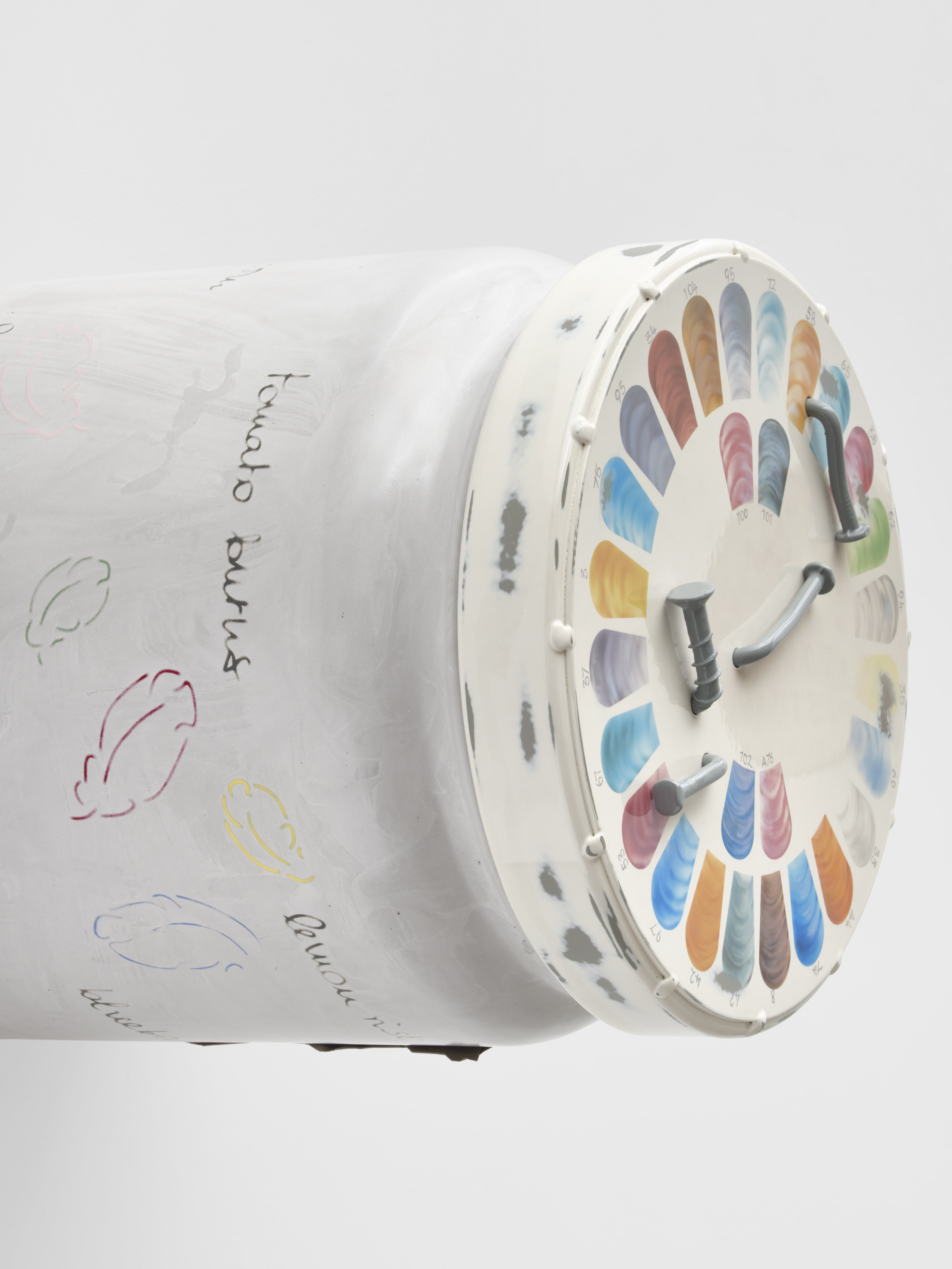
But this guiding narrative rarely appears. Instead, we are presented with scraps of sociological context: a critique of food production (through a playful engagement with a syncretic visual language of packaging); a walk in the woods during the Covid-19 lockdowns; an engagement with “camp” through the taming of a sculpture that looks like a Post-Minimalist mechanical bull (a sanitized member of the Matthew Barney Expanded Universe). Even as the detailed list of materials that accompany every object imply the presence of the artist or a team of fabricators — “machine and hand folded,” “hand-waxed,” “custom-embroidered cotton webbing” — an airless conceptualism pervades. Perhaps this is part of the point: we are drawn into the work by hints of something familiar only to realize we have been presented with a riddle — unsolvable, only partially unidentifiable, seemingly intuitive yet profoundly artificial.
I was therefore pleasantly surprised to encounter some unexpected atmospherics at KM21. In “Parallel Bones” recent work by Reus is shown alongside selections the artist made from the Kunstmuseum Den Haag’s expansive collection of objects from T.A.C. Colenbrander, a Dutch Art Nouveau designer and ceramist. The gallery is dimly lit and moody, the air strangely warm and a little stagnant. This setting lends the exhibition — laid out like a palindrome with a pair of Reus’ “Candlesticks” (2022) placed on either end of the gallery bracketing more than fifty sculptures, textiles and ceramic accoutrement — a somewhat undisciplined sensuality in which details and contours from individual works are reflected across the walls as overlapping, marbled shadows. With their traces of jam and yogurt rendered in epoxy resin, the “Clementine,” series, which takes up the majority of space in the gallery’s mid-section, were the main conduits of this shadowplay, and showcased a painterly detail that almost outshines the jumble of decals and inscriptions populating the surface of the jars.
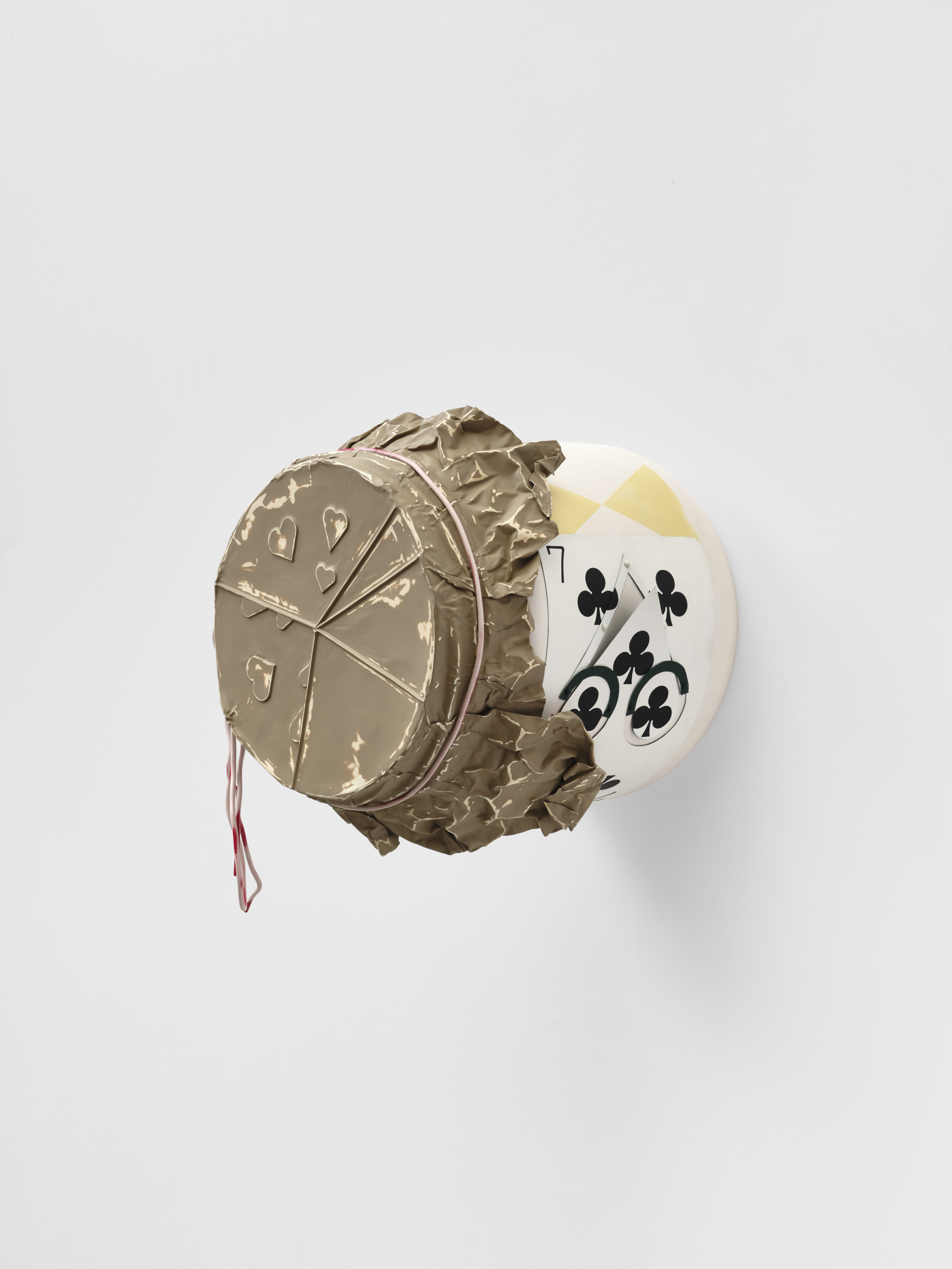
Following a trend toward transhistorical curating — something quite beautifully and subtly executed in recent exhibitions — KM21 has given Colenbrander equal billing alongside Reus. Yet while Colenbrander’s eye-catching vases painted with abstract rivulets of color are presented dramatically at the start of the exhibition (using a high-tech system of stands, clamps and brackets), this is Reus’ show. Strangely, information on many of the Colenbrander pieces is missing from the exhibition guide, which seems less like an engagement with the tensions inherent in uniting two artists of different genders, generations and approaches to art making, but both with roots in Den Haag, than a simple oversight. Colenbrander’s work is indeed presented in unexpected and unconventional ways: dinner plates are flipped to show the reverse side with scribbles, notes and sketches that one can only imagine appear on the frontside in final form. These same whimsies are present across Reus’ work too, but unlike the Colenbrander presentation, they seem tirelessly rehearsed instead of illuminating.
Take ” Candlesticks,” which are tall, slender lampposts made from powder-coated aluminium and “hand-patinated” brass, featuring a crown of moulded resin wreathed by aluminium wires. Somewhere in the list of material processes, the posts became a handsome forest green, which together with its sceptre-like crown and wires evinces a grandiosity and formidability. A sculpted object made of resin and white plaster in the base of each lamp undercuts this majesty, however: variations include an ear of corn, an aubergine, a clutch of mushrooms, and a bulbous raspberry, each perched atop a base resembling a paper plate. Are these the discrete elements of a picnic? An energy source? A visual gag? A bit of “lightness” for a lamp with no electrical capabilities? In fact an assortment of visual clues leads to a more literal reading in which the wires of the lamp's crown appear to spell out “LED” and “Halogen”, while engravings on the base of the post and inlaid bits of measuring tape signal a laboratory of sorts. The introduction of numbers and signs rebukes our marveling at this glamorous object, reminding us that this work is serious, it’s about something, it’s about agribusiness, but it’s also about art-making, which is perhaps not all that serious.
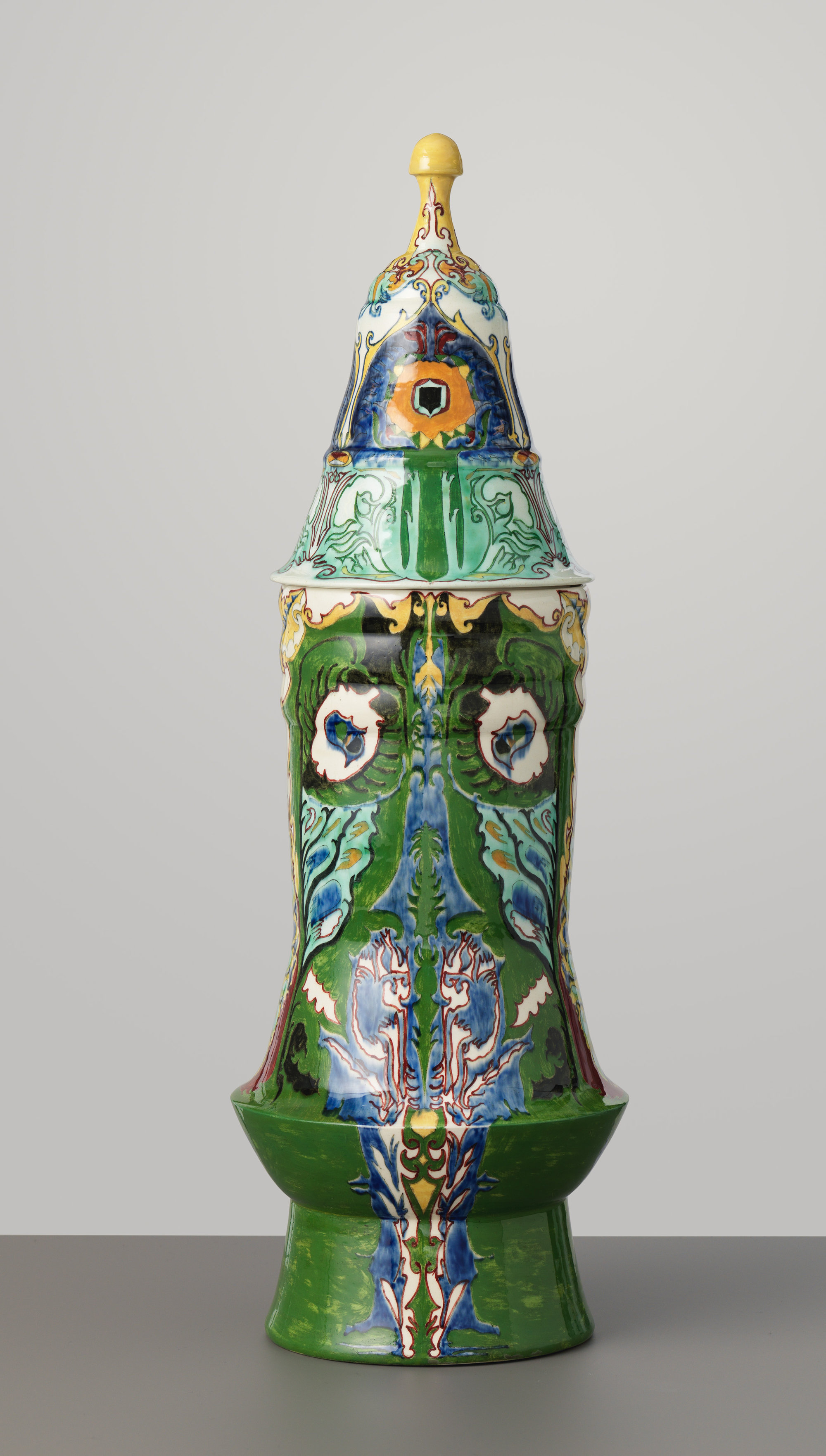
I missed the words spelled out in wire during my visit, though it’s hard to miss the insertion of controlled absurdity as a warning that something in the world, in the fiber of our everyday lives, is amiss. ”Candlesticks,” however, don’t look particularly absurd or strange; they look expensive. So does everything else Reus makes, even as it performs as funny, broken, dirty, misshapen. In the center of the gallery, atop two Colenbrander-designed carpets featuring large ornamental designs, sits Reus’ series ”What Grows” (2024), which consist of a collection of large objects — a paper sack, a bent measuring tape, a crumbled box. In a work interested in depicting different kinds of potentially unruly growth (developmental, agricultural, economic), Reus' careful coordination of her panoply of materials and processes is one of control. Instead of a daring collision of works from different eras, with the Colenbrander carpet actually put to use, the ensemble looked like the result of a lot of time spent behind a computer.
This extends to the larger presentation of Colenbrander’s ceramics. In the center of the gallery, mimicking the ”Clementine,” series, dishes and vases are bolted to the wall perpendicularly with nifty brackets, which seem less like a risky choice or a kind of “reversed archeological process” than something architecturally planned, tested and rendered with special software. I liked seeing these works hanging differently, but the “wrongness” of doing so ultimately felt contrived; a way of forcing a more hidden or profound meaning between the two bodies of work, when such meaning is quite often on the surface. It’s hard to take seriously what some have called the inscrutability of Reus’ work. There may be an effort to withhold straightforward information, but we’re given many chances (sometimes eleven) to land on an interpretation.
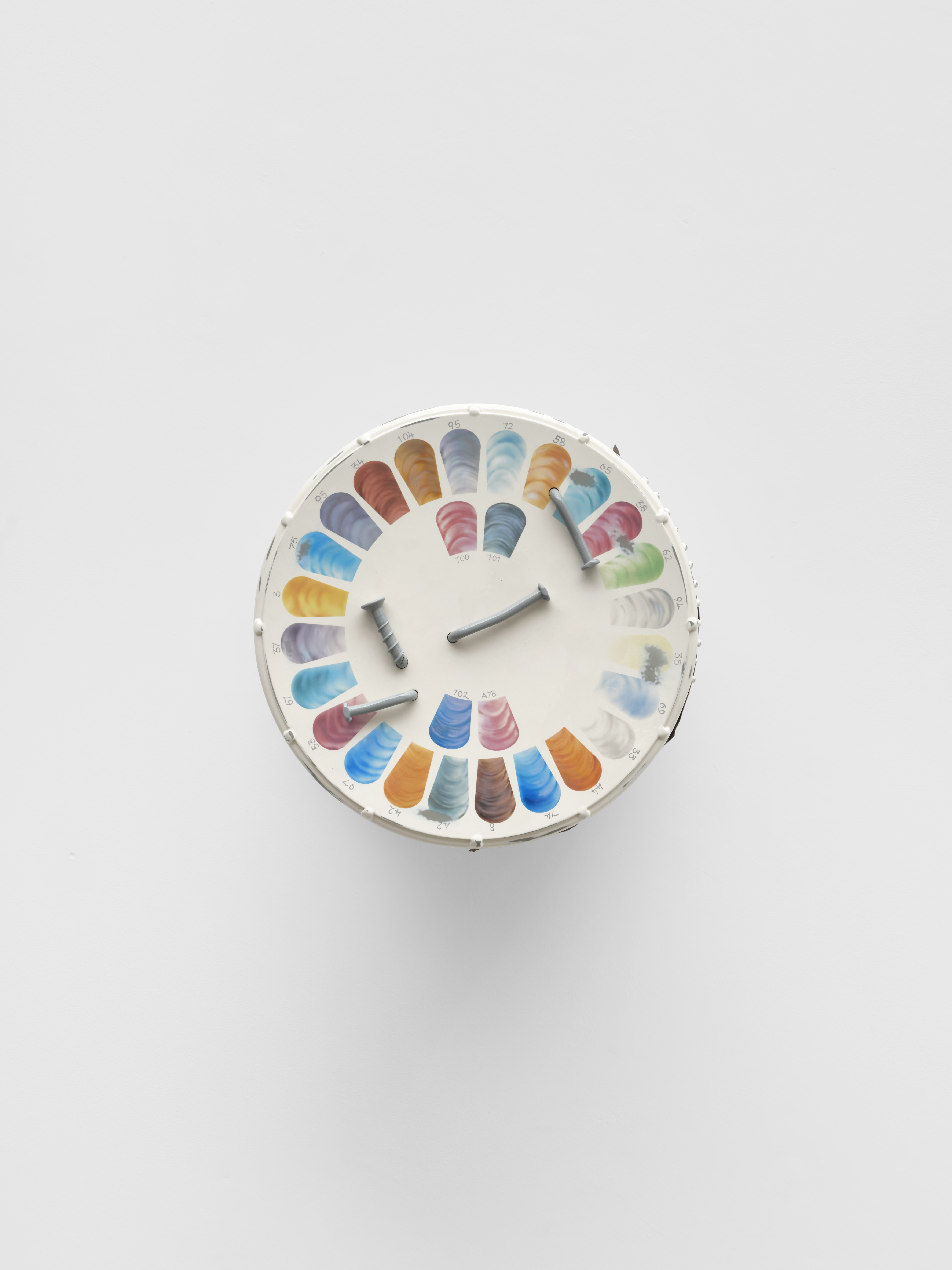
This review is becoming very long, and I haven’t even touched on the newest works, a series of weavings on French bakery linen that were hidden in the back of the gallery, the only work that appears to be directly inspired by Colenbrander’s sketches of flowers and grids. Perhaps this text keeps growing, because what I’m trying to do here is reconcile that initial jolt of excitement I often experience when I encounter a sculpture by Magali Reus. There’s the sense that the work, in its familiarity and strangeness, its celebration and perversion of craft, wants to get under my skin. Reus, though, is so in control of her materials, that there’s really no place for the viewer at all. Which brings me back to Matthew Barney, whose body of work — whether you like it or not — never seems settled; materials appear alive, or like they want to be. It would be perverse to end with a request that one artist be more like another (especially like a very wealthy, famous male one). So I’ll say this: I wish Magali Reus’ work was a lot less like Matthew Barney’s — funnier, more obsessive, playing more with plasticine folds of suburbia, sometimes smaller, less picture perfect. Carolee Schneeman once said, when asked about Barney’s “borrowing” of her work for his Drawing Restraint series, “I’m so unattractive to any promotion machines, I’m some part of nature that just keeps pouring and pouring and pouring.”² The many vessels in “Parallel Bones” are already upended, I just wish they would pour.
- Diamond Stingily and Matthew Barney, “Artist Convening with Matthew Barney & Diamond Stingily,” Gladstone Gallery, October 21, 2024, YouTube.
- Carolee Schneeman, “Interview Extract and Photograph” by Odili Donald Odita, plexus.org, 1997.